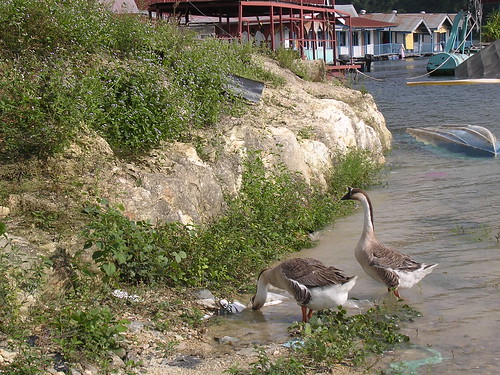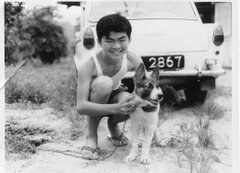But I wonder how many of us know that this plant also bears flowers. I certainly did not, and thus was pleasantly surprised to see some blooming in our garden not longer ago. I took some photos and share them with you here.
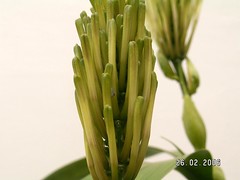
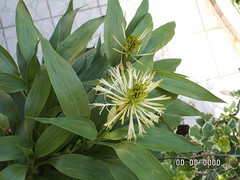
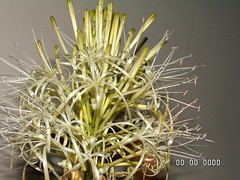
"Good morning yesterday. You wake up, and time has slipped away. And suddenly it's hard to find, the memories you left behind. Remember. Do you remember?" - Paul Anka, Times of Your Life



 If, like me, you enjoy this genre of movies, I would recommend you an even older one by the title of Hiroshima 28 (广岛28)also starring Josephine Siao Fong Fong. The story is about a young Japanese woman who contracted the deadly leukemia arising from the effects of the atomic bombing of Hiroshima 28 years after the event.
If, like me, you enjoy this genre of movies, I would recommend you an even older one by the title of Hiroshima 28 (广岛28)also starring Josephine Siao Fong Fong. The story is about a young Japanese woman who contracted the deadly leukemia arising from the effects of the atomic bombing of Hiroshima 28 years after the event.  Photo of Hiroshima Peace Crane courtesy of Kamoda.
Photo of Hiroshima Peace Crane courtesy of Kamoda. I took this picture in December 1985 at a place called Ura Bandai, near Lake Inawashiro in Northern Honshu, Japan.
I took this picture in December 1985 at a place called Ura Bandai, near Lake Inawashiro in Northern Honshu, Japan.
 Thanks to Peter’s friend for this rare but somewhat faded photo of Singapore’s first fast food restaurant at Dunearn Road.
Thanks to Peter’s friend for this rare but somewhat faded photo of Singapore’s first fast food restaurant at Dunearn Road. ** I have been informed that there is an error in my sketch above. The location of the old Adam Rd Hawker Centre should be on the same side as the present location. Anyway, I intend to blog about this another time. Hope I can provide more reliable information then. LCS - 23Jan2007.
** I have been informed that there is an error in my sketch above. The location of the old Adam Rd Hawker Centre should be on the same side as the present location. Anyway, I intend to blog about this another time. Hope I can provide more reliable information then. LCS - 23Jan2007. Here’s the spot where the A&W Restaurant used to stand.
Here’s the spot where the A&W Restaurant used to stand. Photo courtesy of Luckypines
Photo courtesy of Luckypines Scanned postcard photo of Tiger Balm Gardens (Haw Par Villa) in the sixties. Courtesy of Memories of Singapore
Scanned postcard photo of Tiger Balm Gardens (Haw Par Villa) in the sixties. Courtesy of Memories of Singapore It was the sight of a crowded old bus in Yangon last year, like this one, with people standing at the steps, that nudged me into starting Good Morning Yesterday. Photo from the collection of the National Archives of Singapore.
It was the sight of a crowded old bus in Yangon last year, like this one, with people standing at the steps, that nudged me into starting Good Morning Yesterday. Photo from the collection of the National Archives of Singapore. 1960 Photo of Paya Lebar Bus at Jalan Kayu Village (Courtesy of Peter Tan)
1960 Photo of Paya Lebar Bus at Jalan Kayu Village (Courtesy of Peter Tan)Bone Shakers
As you might expect, the buses of those days were all bone shakers. For example, whenever it rained, nobody would take the seats next to the windows. Why? Because the windows, which were usually the sliding type were often jammed and could not be raised and thus rain would splash onto the seats. Unless you were a ‘Hercules’ you wouldn’t dare try to draw it up; especially if there were school girls around. Imagine how malu (embarrassing) if you were not strong enough to do it.
Breakdowns were a common occurrence. Whenever a bus broke down, all the passengers would have to debus and wait at the roadside for another one to come along. When it did, you can imagine the mad rush and the packed condition.
Two brands of buses that I can recall are International Harvester and Isuzu. When I was studying at the Prince Edward campus (Those days, the University of Singapore’s Engineering Faculty was housed at the Singapore Polytechnic at Prince Edward Road), there was a bus terminus across the road. Next to it was a big car park which would be turned into a open air hawker centre in the evenings. Every morning, the drivers would rev the engines of their Isuzu buses for ages, and the noise was a great disturbance to our lectures.
About these dinosaurs, Peter recalls:
"Buses in the 60s had wooden floor panels unlike the metal ones we see today. Sometimes there were gaps between the panels and we could see the transmission and the road below us. Standing passengers stood along the aisle and you know what some school boys would do when they need to get down from the bus ... leave you to imagine .. "
Packed Like Sardines
As expected, buses were often very crowded. Sometimes the bus was so packed that you didn’t need to hold the overhead railings to maintain your balance. The situation was not helped by the fact that many kiasu passengers were reluctant to move to the front and rear sections for fear that they would not be able to make it to the single entrance/exit which was usually at the centre of the bus. Consequently, we often had to cling on the side rail at the entrance of the bus with one foot on the steps and our bodies hanging out of the bus like in the photo above. Sometimes, the bus conductor used his metal ticket punch to knock our fingers in an attempt to dislodge us. Undated Photo of bus along North Bridge Road (Courtesy of Peter Tan). Notice that there is only one entrance/exit near the mid-section of the bus. Passengers were reluctant to move to the front and rear of a crowded bus because they did not want to push they way to the exit when it was time to get off.
Undated Photo of bus along North Bridge Road (Courtesy of Peter Tan). Notice that there is only one entrance/exit near the mid-section of the bus. Passengers were reluctant to move to the front and rear of a crowded bus because they did not want to push they way to the exit when it was time to get off.
The Ticketing System
Besides the bus driver, there was a bus conductor whose job was to collect the fare and punch the tickets. The tickets of various denominations were mounted on a metal pack with thick rubber band (like those for pyjamas). He carried a canvas satchel for the coins.
Bus conductors of those days were usually rough characters. In fact many were gangsters. Of course, they were not as disciplined as the bus conductors of today. For example, the driver often parked his bus at the roadside next to a coffee shop, with all the passengers inside, so that they can buy their breakfast. Sometimes, they would simply drive into the bus depot, again with all the passengers, to top up their petrol tanks.
Occasionally, a bus inspector would board the bus and made random checks. After he had inspected your ticket, he would make a small tear to authenticate it.
#########################################
Besides the above, Peter also has some fond memories of his bus rides:
I recall one botak conductor from Green Bus who could balance on one leg when the bus was swaying from side to side. He boasted he was the "Monkey God" and indeed he could really imitate one.
I often took Green Bus to Tek Kah to get to school. What I liked most was when the bus had to be changed at the depot because the bus was konking-out (due to steam coming out from the radiator, or gear cannot change).
Because my school was in Bras Basah, sometimes we saved 10 cents by walking to Queen Street (where Rochore Center is) to board #1 Green Bus. Otherwise if we wanted to catch the sight of Convent girls we stood at Capitol (Stamford Road) for a STC and got off at Selegie Road and walked over to Rex Cinema (facing KK Hospital) to catch Green Bus.
When my school relocated to Grange Road in 1972 for a short period of time, I took the Amalgamated Bus Company’s #200 via Sixth Avenue to Holland Road (facing Chip Bee Estate) and then a #12 via Queenstown to River Valley Road. To our delight, we discovered that there were also pretty girls studying in the Queenstown area.
Those were the days when X films were banned in Singapore but available in JB (Johor Bahru). So we took UBC (formerly Green Bus) #170 to JB to watch at the Rex Cinema. Then we stayed longer for the evening and went to Mechinta Night Club down at the Lido beach to watch a striptease show.
 Undated Photo of Green Bus Terminus in Johor Bahru (Courtesy of Peter Tan)
Undated Photo of Green Bus Terminus in Johor Bahru (Courtesy of Peter Tan)
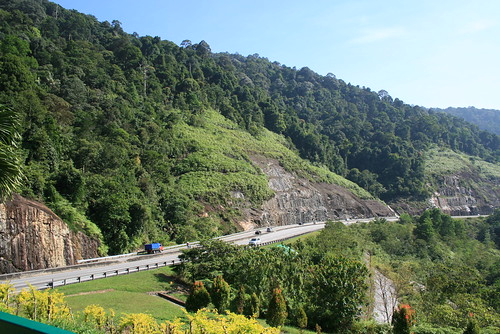
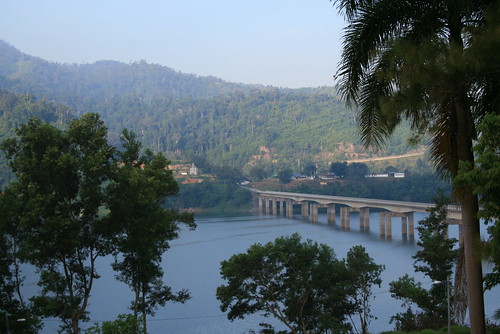
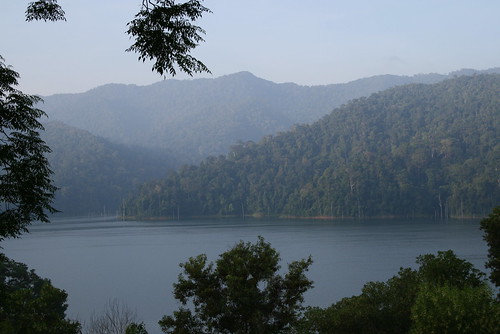
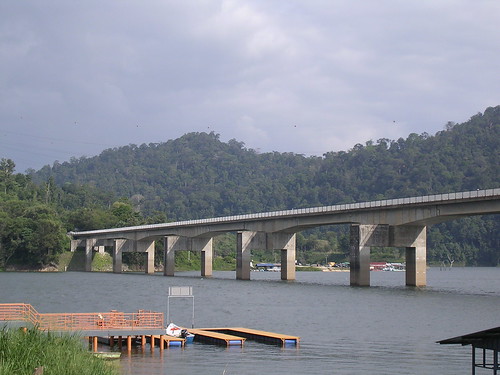
This is another bridge which joins the eastern end of the island to the mainland.
